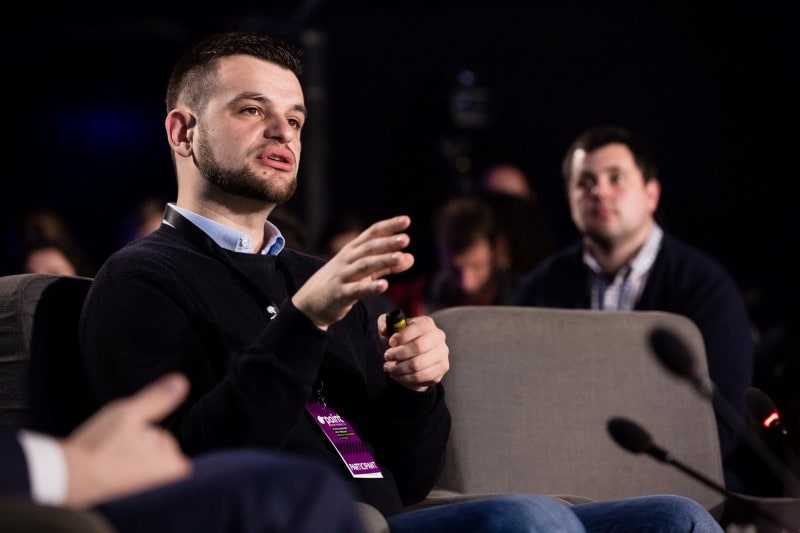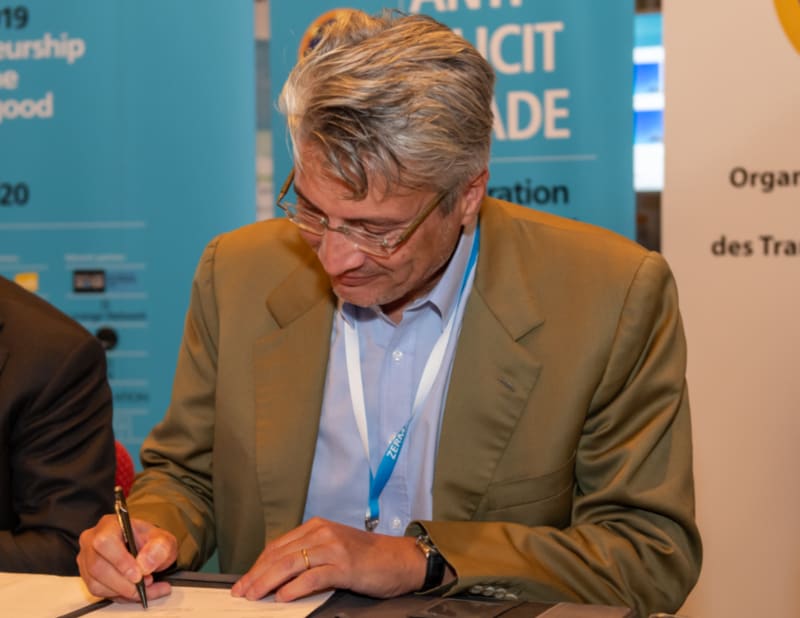
Stemming financial flows to strike at the heart of illicit trade
28 JUN 2021

All too often, we think of illicit trade or trafficking as a series of diverse and divergent activities. But we need to think in terms of similarities if we want to get the upper hand on those who are behind these crimes.
Whether we are speaking of human trafficking, wildlife poaching, diversion of firearms, the manufacture of counterfeit pharmaceuticals, or illicit cigarettes, commonalities exist. All forms of illicit trade require some type of infrastructure or “pipeline” that stretches from acquisition to distribution, transportation methods, and human resources. This is applicable to all, whether we refer to criminal network hierarchies, manufacturers, distributors, “white-collar workers” such as lawyers or bankers, compromised individuals and government workers, or low-level spotters. People actively engage in illicit trade across the whole gamut of society.
No matter what type of illicit trade is being carried out or whether the perpetrators are cloaked in legitimacy, hiding behind companies registered in far-off lands, or networks consisting purely of criminals—they have one major commonality: They are bound by the pursuit of money.
Money is the common denominator in illicit trade. Its essential role in the web of illegal activity is also that web’s weak spot—and it is one that must be exploited.
Illicit trade is by its very nature a transnational crime, weaving borders together in unwitting or unwilling partnerships. But this relationship is rarely uncovered until a preliminary investigation is initiated—at the place where illicit goods are intercepted or seized, somewhere between access or manufacture and delivery. It is at that point when investigators can look back at the source—or forward toward the intended distribution point—that the complex nature of illicit trafficking and its relationship to various states become clear. How best to conquer the problem, to find the answers, and to act is less so. It is here that the money trail becomes the key to unlocking illicit trade.
We’ve certainly heard the phrase “follow the money!” before, but it is of course easier said than done. A first step is examining the big picture—and when we do, we often realize that attacking the problem bit by bit, illegal act by illegal act, is little more effective than playing “whack-a-mole.” And in that way, the problem is never truly addressed.
One cannot “follow the money” without a clear understanding of whose money they are following. Today, it is critical that authorities on both sides of our nations’ borders cooperate and share their respective information regarding illicit networks, seizures, and methods of trade.
The fact that illicit trade spans across many borders presents authorities with the opportunity to identify the role played by each state. This includes how locations are used as places to acquire, manufacture, or transfer goods, or to carry out financial activities, and more.
Having insight into the big picture allows law enforcement to identify the recurring actors or entities being exploited by criminal networks, ranging from shippers to corrupt officials and banks. Collaborating does not mean that one jurisdiction “takes” and the other “gives.” There are well-established methods of sharing assets and ensuring that all states involved profit from the investigation. What must remain a priority is that criminal networks are set to lose.
In designing and carrying out their illicit businesses, criminal networks deliberately look for the weakest links to target and breach. These weaknesses cover a wide variety of industries and frameworks including legal, financial, and reputational aspects. States that have weak legal regimes, such as poor anti-money laundering laws and criminalization of various illicit trade such as illicit cigarettes, coupled with poor prosecution rates or judicial resources, are welcome venues for sophisticated trafficking networks or the manufacturer of illicit goods. So too are those states with physical vulnerabilities, such as long coastlines that cannot be sufficiently policed, thus providing smuggling opportunities ready for exploitation by criminals.
States can and should review the data and information being accumulated by law enforcement, researchers, academics, the private sector, and civil society, that address what is happening within their countries. This valuable insight should be used to strengthen nations’ laws, allocate resources, and shore up vulnerabilities. Much of this information is coming to the fore and can serve as a valuable tool to fight illicit trade.
I became a member of PMI IMPACT’s Expert Council at its inception. I was attracted to the initiative’s goals, which were innovative and open to all to address the various aspects of illicit trade. During my time as a member of the Expert Council, I have seen the expansion of creativity, the gravitas, and the desire to fight and win against illicit trade and traffickers from grantee applicants throughout the world. Programs such as PMI IMPACT provide the opportunities for innovation from law enforcement, academics, or civil society to succeed and a global platform to share these innovations.
I believed then, as I do now, that this is the way to drive forward the research and cooperation that is required to grasp illicit financial flows. It is only by true understanding that we can look to tackle this cross-sector, multi-industry phenomenon, and stop those who are engaged in illicit trade.



